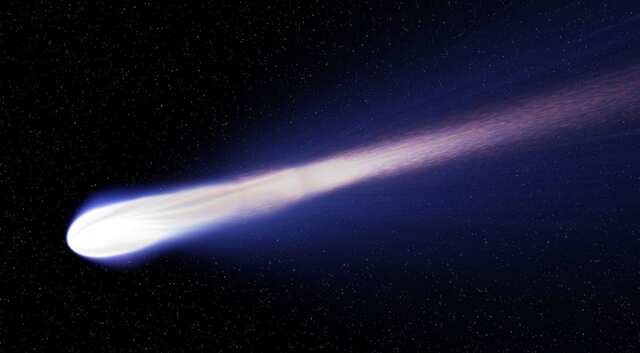Giant cryovolcanic comet with 'horns' is racing towards Earth after exploding in space
Story highlights
The cryovolcanic comet called 12P/Pons–Brooks, which is expected to make its closes approach to Earth next year has re-grown its distinctive "horns" after undergoing its second major eruption in four months
A huge volcanic comet, which is as big as a city, has exploded violently for the second time in four months while it hurtled towards the sun. Similar to the previous eruption, it emitted a cloud of gas and ice which appeared like a gigantic pair of horns.
The comet, which is called 12P/Pons-Brooks, is a cryovolcanic or cold volcano comet. The comet has a solid nucleus which has an estimated diameter of 18.6 miles (30 kilometers), and contains a mix of dust, gas and ice known as cryomagma.
The nucleus has been surrounded by a fuzzy cloud of gas known as a coma, which leaks out of the interior of the comet. When the insides of the comet are heated by solar radiation, the pressure increases and the comet explodes violently, releasing its frosty guts through the cracks of the shell of the nucleus into space.
On October 5, a large outburst from 12P was detected by astronomers after the comet turned a dozen times brighter because of extra light reflecting from its expanded coma, as per the British Astronomical Association (BAA), which has been observing the comet closely.
In the next few days, the coma of the comet further expanded and grew its "peculiar horns," reported Spaceweather.com. Few of the experts said that the coma's irregular shape makes it look like a science fiction spaceship, such as the Millennium Falcon from Star Wars.
Comet may return to Earth in 2095
The unusual shape of the coma was most probably because of an irregularity in the shape of 12P's nucleus, said BAA astronomer Richard Miles, while speaking to Live Science after the previous eruption of the comet.
Most likely, the outflowing gas is being obstructed partially by a notch sticking out on the nucleus, said Miles. He added that as the gas has been expanding away from the comet, the irregularity in the shape of the coma becomes more noticeable and defined.
WATCH | Indian space agency ISRO fights over 100 cyber attacks every day
Currently, 12P has been hurtling towards the inner side of the solar system where it will slingshot on the highly elliptical 71-year orbit of the sun, similar to how a near-identical manoeuvre was pulled off by green comet Nishimura on September 17.
On April 21, 2024, 12P will be coming closest to Earth and it is likely to become visible to the naked eye before getting catapulted back towards the outer solar system. The comet is not likely to return till 2095.
(With inputs from agencies)
You can now write for wionews.com and be a part of the community. Share your stories and opinions with us here.
WATCH WION LIVE HERE

)